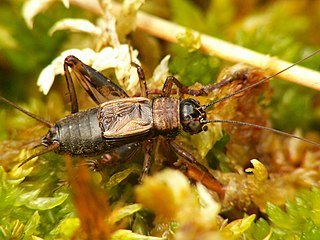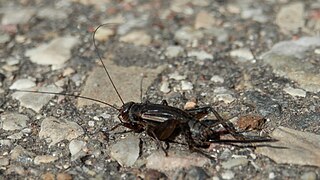
Kent County Cricket Club is one of the eighteen first-class county clubs within the domestic cricket structure of England and Wales. It represents the historic county of Kent. A club representing the county was first founded in 1842 but Kent teams have played top-class cricket since the early 18th century, and the club has always held first-class status. The current Kent County Cricket Club was formed on 6 December 1870 following the merger of two representative teams. Kent have competed in the County Championship since the official start of the competition in 1890 and have played in every top-level domestic cricket competition in England. The club's limited overs team is called the Kent Spitfires after the Supermarine Spitfire.

The St Lawrence Ground is a cricket ground in Canterbury, Kent. It is the home ground of Kent County Cricket Club and since 2013 has been known as The Spitfire Ground, St Lawrence, due to commercial sponsorship. It is one of the oldest grounds on which first-class cricket is played, having been in use since 1847, and is the venue for Canterbury Cricket Week, the oldest cricket festival in the world. It is one of the two grounds used regularly for first-class cricket that have had a tree, the St Lawrence Lime, within the boundary.

The Vidarbha Cricket Association Ground is a cricket ground located in the city of Nagpur.

The Artillery Ground in Finsbury is an open space originally set aside for archery and later known also as a cricket venue. Today it is used for military exercises, cricket, rugby and football matches. It belongs to the Honourable Artillery Company (HAC), whose headquarters, Armoury House, overlook the grounds.
Nairobi Gymkhana Club is a cricket ground and team in Nairobi, Kenya. It hosted two matches during the 2003 Cricket World Cup. The ground has a capacity of 7,000 people. It is located north of the central business district, but not far from it. The ground is the main cricket venue in the country and the only one which could in any way be described as a major ground.

The sociable weaver is a species of bird in the weaver family, endemic to Southern Africa. It is the only species in its genus Philetairus. It is found in South Africa, Namibia, and Botswana, but its range is centered within the Northern Cape Province of South Africa. The species builds large, compound, community nests, a rarity among birds. These nests are perhaps the most spectacular structure built by any bird.
Nondescripts Cricket Club Ground, a first-class cricket ground in Maitland Place, Colombo, is the home ground of the Nondescripts Cricket Club.

Brunton Memorial Ground is a cricket ground at Radlett in Hertfordshire. The ground is the home of Radlett Cricket Club and, since 2013, has been used as an outground by Middlesex County Cricket Club. It was used occasionally by Hertfordshire County Cricket Club between 1975 and 2008 for Minor Counties Championship matches.

Rajiv Gandhi International Cricket Stadium, also colloquially known as Dehradun Cricket stadium is a cricket stadium in the Dehradun, Uttarakhand in India. It is the home ground of Uttarakhand cricket team.

Nemobiinae is a subfamily of the newly constituted Trigonidiidae, one of the cricket families. The type genus is Nemobius, which includes the wood cricket, but members of this subfamily may also be known as ground crickets or "pygmy field crickets".

Allonemobius is a genus of cricket, insects in the family Gryllidae. They are part of the subfamily Nemobiinae, also known as "ground crickets."

Allonemobius allardi, commonly known as Allard's ground cricket, is a species of ground cricket in the family Gryllidae. It is found in North America.

Neonemobius variegatus, known generally as the variegated ground cricket or smaller spotted ground cricket, is a species of ground cricket in the family Trigonidiidae. It is found in North America.
Cyclotelus is a genus of stiletto flies in the family Therevidae. There are more than 20 described species in Cyclotelus.

Allonemobius fasciatus, commonly known as the striped ground cricket, is an omnivorous species of cricket that belongs to the subfamily Nemobiinae. A. fasciatus is studied in depth in evolutionary biology because of the species's ability to hybridize with another Allonemobius species, A. socius.
Gammarotettix bilobatus, also known as the arboreal camel cricket, is a North American species of camel cricket in the family Rhaphidophoridae. It is found in California, including along the Coast Ranges and as far south as Gilroy. Adults emerge in February and live until June. Host plants of G. bilobatus include California buckeye, California bay, coast live oak, barberry, Monterey pine, black locust, California lilac, and Christmas berry. To evade predators such as the chestnut-backed chickadee, they jump to the ground.

Allonemobius tinnulus, the tinkling ground cricket, is a species of ground cricket in the family Trigonidiidae. It is found in North America.

Eunemobius carolinus, the Carolina ground cricket, is a species of ground cricket in the family Trigonidiidae. It is found in North America.
Allonemobius shalontaki, also known as the Choctaw ground cricket, is a species of ground cricket in the subfamily Nemobiinae. It is found in North America. The common name refers to the fact that the cricket was first discovered within the Choctaw Nation, and the species epithet means cricket in the Choctaw language.














